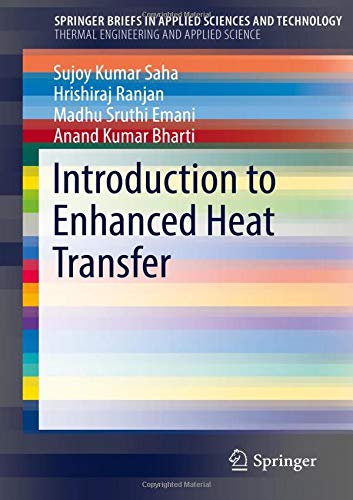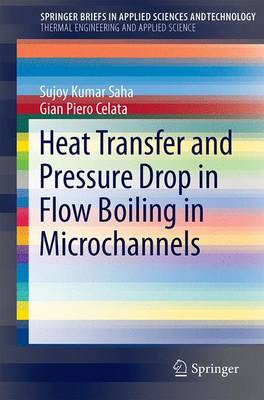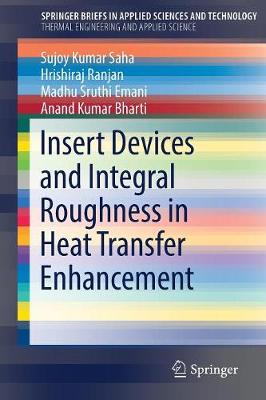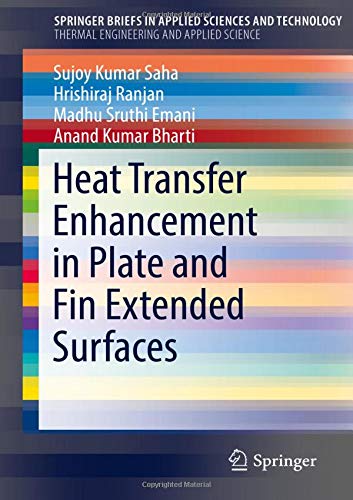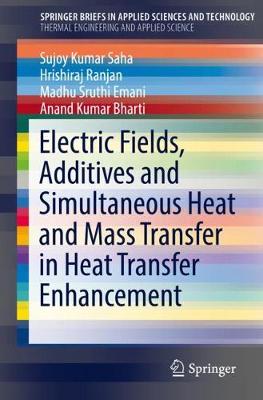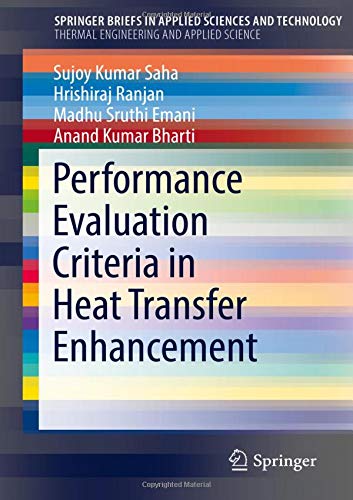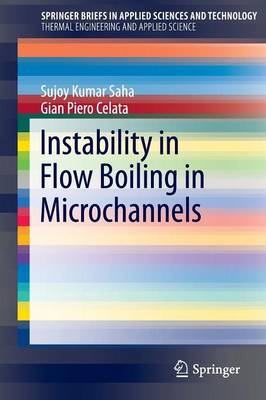SpringerBriefs in Thermal Engineering and Applied Science
8 total works
Introduction to Enhanced Heat Transfer
by Sujoy Kumar Saha, Hrishiraj Ranjan, Madhu Sruthi Emani, and Anand Kumar Bharti
This Brief stands as a primer for heat transfer fundamentals in heat transfer enhancement devices, the definition of heat transfer area, passive and active enhancement techniques and their potential and benefits and commercial applications. It further examines techniques and modes of heat transfer like single-phase flow and two-phase flow, natural and forced convection, radiation heat transfer and convective mass transfer.
Critical Heat Flux in Flow Boiling in Microchannels
by Sujoy Kumar Saha and Gian Piero Celata
Heat Transfer and Pressure Drop in Flow Boiling in Microchannels
by Sujoy Kumar Saha and Gian Piero Celata
Insert Devices and Integral Roughness in Heat Transfer Enhancement
by Sujoy Kumar Saha, Hrishiraj Ranjan, Madhu Sruthi Emani, and Anand Kumar Bharti
This Brief describes heat transfer and pressure drop in heat transfer enhancement by insert devices and integral roughness. The authors deal with twisted-tape insert laminar and turbulent flow in tubes and annuli in smooth tubes and rough tubes, segmented twisted-tape inserts, displaced enhancement devices, wire coil inserts, extended surface inserts and tangential injection devices. The articles also address transverse and helical integral rib roughness, corrugated tube roughness, 3D and 2D roughness, rod bundles, outside roughness for cross flow, non-circular channels, Reynolds analogy and similarity law, numerical simulation and predictive models. The book is ideal for professionals and researchers working with thermal management in devices.
Heat Transfer Enhancement in Plate and Fin Extended Surfaces
by Sujoy Kumar Saha, Hrishiraj Ranjan, Madhu Sruthi Emani, and Anand Kumar Bharti
This Brief deals with heat transfer and friction in plate and fin extended heat transfer enhancement surfaces. It examines Offset-Strip Fin (OSF), Enhancement Principle, Analytically Based Models for j and f vs. Re, Transition from Laminar to Turbulent Region, Correlations for j and f vs. Re, Use of OSF with Liquids, Effect of Percent Fin Offset, Effect of Burred Edges, Louver fin, heat transfer and friction correlations, flow structure in the louver fin array, analytical model for heat transfer and friction, convex louver fin, wavy fin, 3D corrugated fin, perforated fin, pin fins and wire mesh, types of vortex generators, metal foam fin, plain fin, packings, numerical simulation of various types of fins.
Performance Evaluation Criteria in Heat Transfer Enhancement
by Sujoy Kumar Saha, Hrishiraj Ranjan, Madhu Sruthi Emani, and Anand Kumar Bharti
